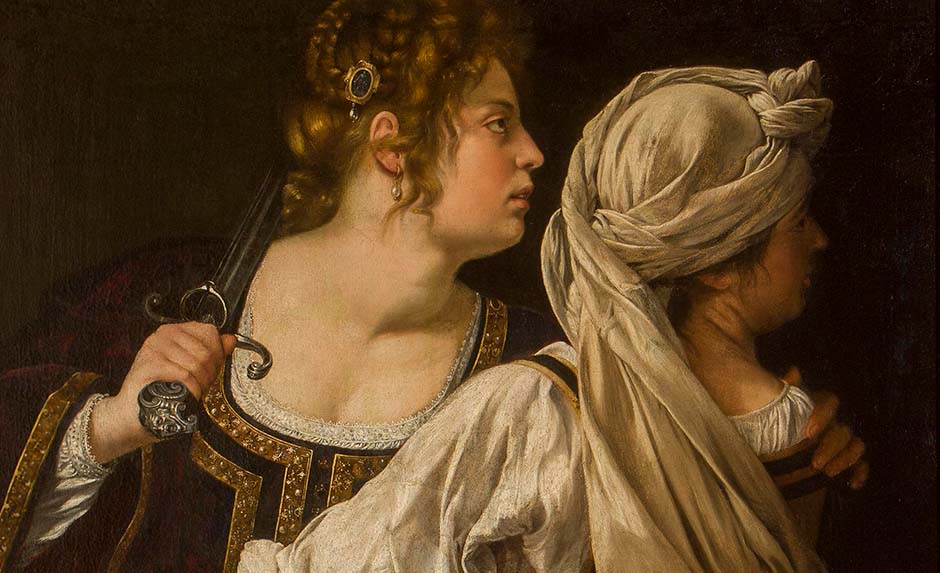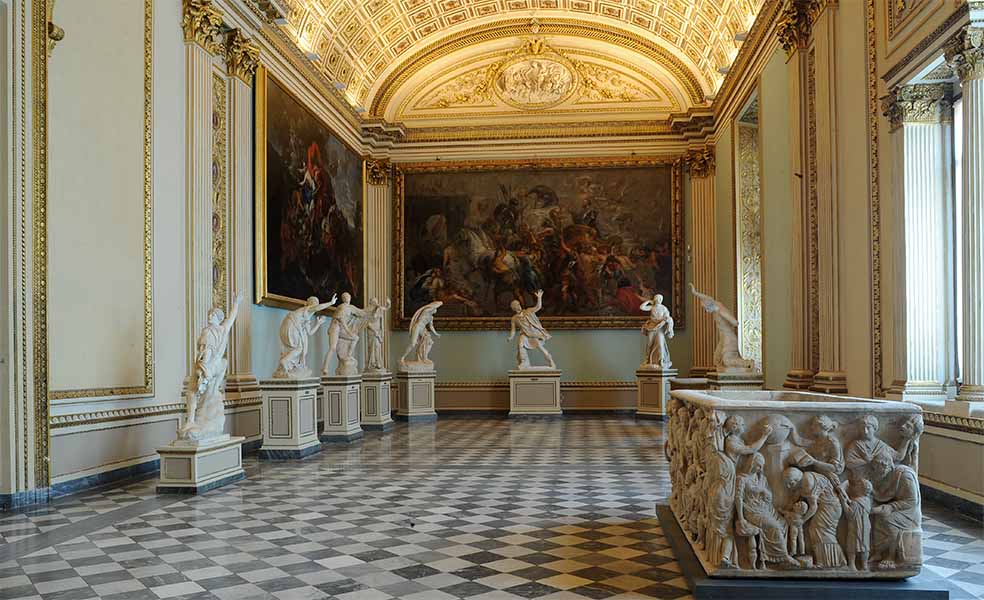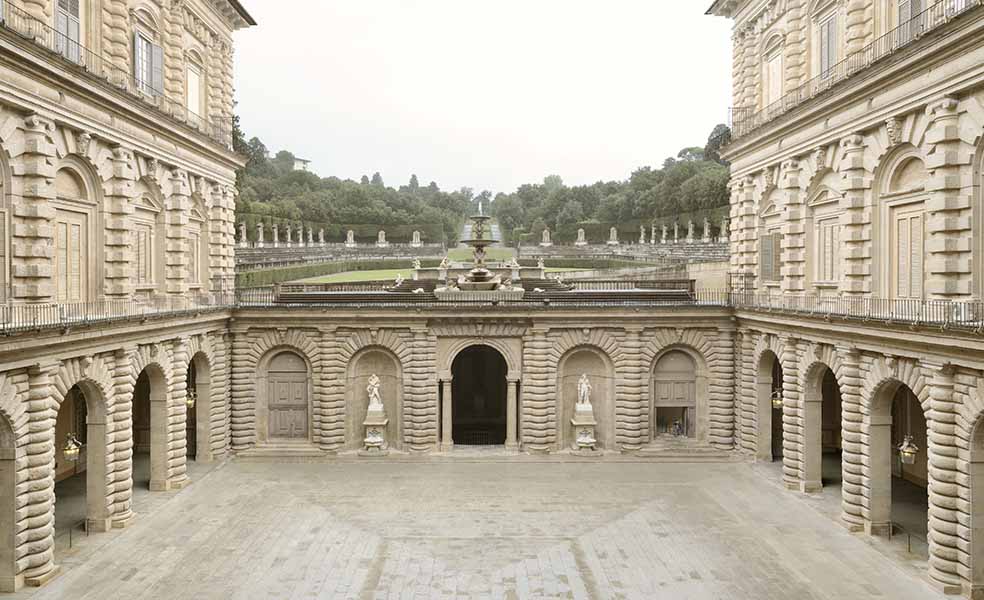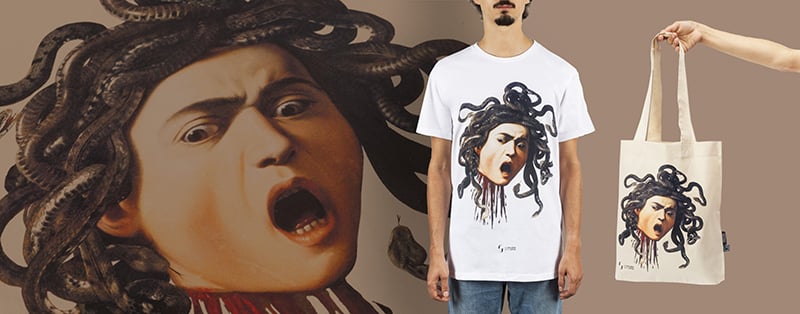Home / Experience / Artemisia Gentileschi
Artemisia Gentileschi

A painter of intense expressive power, Artemisia Gentileschi carved out a space for herself in a male-dominated world thanks to her undeniable talent, the force of her works, and the strength of her character. Raised in a family of artists, she went on to become a symbol of seventeenth-century female painting.
Childhood, training, and a difficult relationship with her father
Artemisia Gentileschi was born in Rome in 1593 into a family deeply connected to the world of art. Her father, Orazio Lomi Gentileschi, a renowned painter and close friend of Caravaggio, came from a long line of artists: Artemisia’s grandfather was a Florentine goldsmith active in Pisa, and two of her paternal uncles were also painters. Her mother, Prudenzia di Ottaviano Montoni, belonged to a prestigious Roman family linked to the papal court—connections that allowed Orazio access to wealthy patrons from both the Church and the Roman intellectual elite, which helped support his artistic career.
The eldest and only daughter of six children, Artemisia showed a strong inclination for drawing and painting from a very young age. Despite the restrictions and misogyny of her time, Orazio chose to support his daughter’s talent and trained her himself, providing loving care and constant attention. However, the relationship between father and daughter was far from simple—they often quarrelled. It would not take long for Orazio to realise that his daughter was not merely a painter, but a true artist.
And, like any true artist, Artemisia quickly developed her own vision: she did not merely imitate her father’s style, but absorbed it, filtered it, and made it her own. Around the age of twelve, in 1605, she officially began working in the family workshop, likely following her mother’s death. Alongside her father, who was highly esteemed by Roman patrons, she came into contact with many of the most fashionable artists of the time—including Caravaggio, who would greatly influence her later style.
Despite their frequent disagreements, Orazio often spoke proudly of his daughter in his letters. From these accounts, we know that by the age of fifteen Artemisia was already well regarded within Roman intellectual circles.
During this formative period, the young woman worked alongside her father on various commissions while also producing independent paintings—such as Susanna e i vecchioni, painted in 1610 and now housed in the Graf von Schönborn Collection in Pommersfelden, Germany. This work attests to her remarkable skill and shows her ability to combine her personal style with both her father’s influence and that of major contemporary artists like Caravaggio.
Her talent was so evident that in 1612, in a letter addressed to Grand Duchess of Tuscany Cristina di Lorena, Orazio declared: “perhaps even the greatest Masters in this profession do not equal her knowledge.” Artemisia was only nineteen, and her abilities seemed boundless—despite the painful situation she was trying to overcome.
The Violence Endured and the Courage to Speak the Truth
Around 1611, the most dramatic and tragically well-known episode of Artemisia’s life unfolded. Agostino Tassi, a painter to whom her father had recently entrusted her as an apprentice, raped her in the Gentileschi home on Via Croce in Rome, while Orazio was away on business, and continued to abuse her psychologically and physically for months. The repeated assaults were made possible also due to the complicity of their neighbour – and supposed family friend – Tuzia, as well as a papal official, Cosimo Quorli, who would later be accused of having harassed her himself and of having stolen works from the family workshop.
Tassi held the young woman hostage for a long time with the false promise of a marriage intended to restore her honour – a common practice at the time.
When Orazio decided to press charges against his colleague the following year, the case became a true scandal that echoed across Rome. Despite the deep trauma and her ruined reputation, Artemisia found the strength to fight back and she voluntarily submitted to humiliating public gynaecological examinations and harrowing interrogations under torture in order to see her attacker brought to justice. During one of these sessions, she was even subjected to the sibille torture, in which the fingers were tied with cords and gradually tightened through a mechanical device. This method, in addition to causing excruciating pain, could result in permanent damage to the phalanges – threatening her future as a painter.
Yet Artemisia endured, and in 1612 Agostino Tassi was finally convicted and exiled from the Papal States. That same year, Gentileschi married the Florentine Pierantonio Stiattesi, and in 1614 they moved to Florence together. They went on to have four children – Giovanni Battista, Cristofano, Prudenzia, and Lisabella – but their marriage was not particularly happy.
The Florentine years and artistic recognition
It was in the Tuscan capital that Artemisia’s career took a decisive turn.
Having closed the terrible chapter of her rape, she returned with renewed focus to painting. In Florence, she was warmly welcomed at the court of the young Grand Duke Cosimo II de’ Medici and began to move in the city’s most cultured circles. During these years, she developed close relationships with several intellectuals, such as the writer Michelangelo Buonarroti il Giovane – great-nephew of the more famous namesake artist – who commissioned her the Allegoria dell’Inclinazione for Casa Buonarroti in 1615; and the revolutionary scientist Galileo Galilei, with whom she formed a particularly strong friendship.
Unlike Rome, Florence was a city dominated by women: Cosimo II, young and weakened by tuberculosis, left the court effectively ruled – and stirred – by two devout Grand Duchesses: his mother, Cristina di Lorena, and his young wife, Maria Maddalena d’Asburgo. The two women reportedly did not get along and vied for the attention of the inexperienced sovereign, competing for power and influence over the courtiers.
Artemisia’s relationship with the Grand Duke, as well as with his mother and wife, is well documented. Unfortunately, however, most of the works believed to date from this period are difficult to attribute precisely. She certainly produced for the court the paintings now on display in Florence – but little is known about others that, over the centuries, have found new homes in Italy and across Europe.
What is certain is that around 1615 she received a commission for the Maddalena Penitente, or Conversione della Maddalena, now housed in the Galleria Palatina in Palazzo Pitti. Likely painted for the young Grand Duchess, who shared her name with the saint, the work reflects the influence of Caravaggio’s lighting techniques, while also introducing original elements. Here, Magdalene is wrapped in a sumptuous yellow silk dress – an unusual detail compared to typical depictions of the time, which showed her in rags. Her dishevelled hair, hand on her chest, tear-streaked face and bare foot, along with the shadowy background, emphasise her profound inner turmoil and the approach of a new life of renunciation.
In 1616, Artemisia reached another significant milestone, becoming the first woman admitted as a member of the Accademia del Disegno in Florence – the prestigious institution conceived by Michelangelo and officially founded by Vasari a century earlier.
However, it was towards the end of her time in Florence that she created her most iconic works – paintings that most vividly reveal the strength of her character and perhaps still echo the shadow of her past. These are her depictions of Judith from the Old Testament, a heroine who defies her oppressor’s will.
Giuditta con la sua ancella (1618–1619), now in the Galleria Palatina, and Giuditta che decapita Oloferne (1620), displayed in the Uffizi, portray two different moments from the same biblical story: the killing of the Assyrian general Holofernes by Judith, a Jewish widow from the besieged city of Bethulia who deceives and defeats the enemy.
Like many of her mature works, these paintings reflect the strong stylistic influence of Caravaggio, with vivid colours against dark backgrounds that heighten the figures and the drama. What stands out is the power of her female figures: defiant, proud and self-assured in the face of evil and injustice. Artemisia does not shy away from raw, realistic details either – such as the gush of blood spurting from Holofernes’s severed head, staining the sheets and the décolletage of his fierce assassin.
Debts, travels, and stylistic maturity
In 1621, a gradual loss of favour at the Medici court and the mounting debts accumulated by her husband forced Artemisia to leave Florence, never to return. For years, her work as a painter had sustained her husband’s taste for luxury, but Pierantonio’s vices had perhaps become too burdensome even for a successful artist like her. She departed for Genoa, where her father was working at the time, and where she met Van Dyck and Rubens – two key figures who would further influence her stylistic development.
The following year, she returned to Rome and remained there for a few years, continuing her artistic work. One of her finest pieces from this period is a new version of Giuditta con la sua ancella, now held in Detroit. This canvas reveals just how much Artemisia’s technique had evolved, producing an evocative and masterful scene in which the two women – lit only by candlelight – move in perfect harmony. This stylistic shift may well have been influenced by Gherardo delle Notti, the Flemish artist then known in Rome for his dramatic nocturnal scenes.
In search of new commissions, Artemisia was forced to move again in 1627, this time to Venice, where she remained for three years before settling in Naples. The Neapolitan capital – the second largest city in Europe by population – was at the height of its splendour and boasted a vibrant cultural scene. Here, Gentileschi devoted herself largely to religious works of a less rebellious and more institutional nature, such as the San Gennaro in the Amphitheatre of Pozzuoli and the Adorazione dei Magi for the Cathedral of Pozzuoli, both painted between 1636 and 1637.
From Naples, her fame spread beyond Italy, as evidenced by commissions she received from King Philip IV of Spain.
Her travels, however, were not over. In 1638 she joined her father in London, at the court of Charles I, hoping to secure funds for her daughter Prudenzia’s dowry. The journey, however, proved unsuccessful, and with the outbreak of the English Civil War on the horizon, Artemisia returned once again to Naples, where she would remain until her death.
There is no definitive record of the date of her passing, but many place it around 1656, during the devastating plague that decimated the city and claimed the lives of many of its greatest artists and intellectuals – among whom Artemisia surely ranked.
Cover photo: Judith with her maid, 1612-1613, Artemisia Gentileschi, Palazzo Pitti, Florence
Rome, 1593 – Naples, 1656
Painting
Related products
Related museums
From €16,00
Originally the residence of the wealthy Florentine banker Luca Pitti, this magnificent palace was purchased in 1550 by Grand Duke Cosimo I de’ Medici, who established his court there with his wife Eleonora of Toledo. After two centuries, from 1737, the palace was to be the residence of the Lorraine family, who succeeded the Medici in the Grand Duchy, and later of the Savoy family during the five years when Florence was the capital of Italy.
Average visit time:
2 hours









